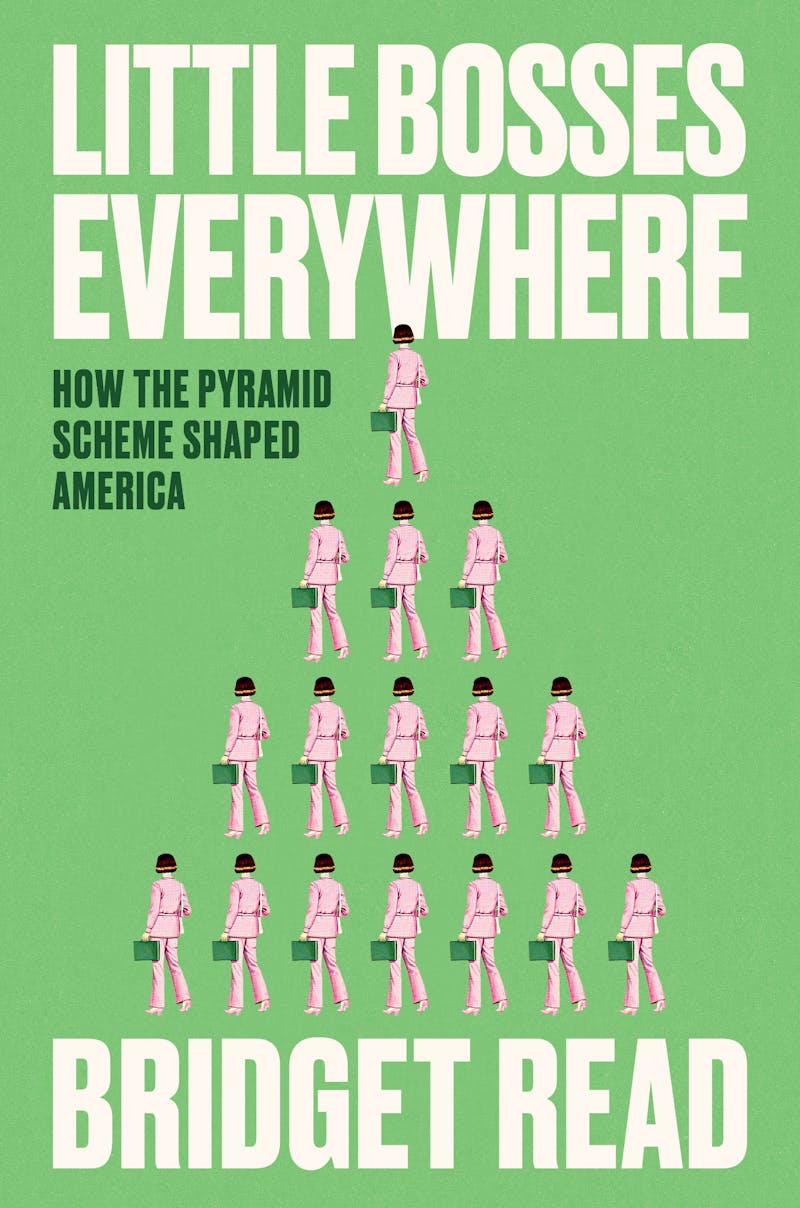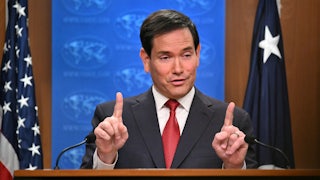Critics of multilevel marketing businesses like Amway and Herbalife make bold claims. Bill Ackman, an institutional investment manager who tried to take down Herbalife, once said of the company, which purportedly sells nutritional supplements, “the customers are fictitious, the business opportunity is a scam.” MLMs are called pyramid schemes, their sellers likened to the snake-oil salesman of yore. The critics’ line goes that these companies have tricked their customers into thinking they are distributors, while in fact they are rewarded for buying products they cannot sell by bringing in other dupes who are similarly encouraged to buy products they cannot sell—a pyramid where the buyers multiply at the bottom and the money stays at the top. Studies of hundreds of companies have shown that 99 percent of people who participate in MLMs do not make any money at all.
Yet some MLMs are publicly traded, worth millions of dollars, and have thousands of members. Some have been around for nearly 70 years. Ackman’s high-profile crusade against Herbalife eventually flamed out, and the company is still going strong. Folksy ol’ value-investing Warren Buffett owns an MLM. The MLM lobbying group, the Direct Selling Association, walks arm in arm with representatives of economic titans like Uber and Amazon. So, are they massive scams or legitimate endeavors? Bridget Read’s thorough history of the industry, Little Bosses Everywhere: How the Pyramid Scheme Shaped America, bolsters the critics’ position. MLMs, she writes, “may constitute one of the most devastating, long-running scams in modern history.” Her contribution lies in explaining how they’ve been able to do it: through the all-American business traditions of weaseling out of regulation, buying political influence, and exploiting the culture’s belief that every individual is a capitalist success story just waiting to happen.

An MLM is a Frankenstein’s monster of two (or possibly three—more on that later) types of businesses, all stitched together. The first business is that of direct sales. This is a simple business. People sell products, door-to-door perhaps, or to friends at parties.
The second business is that of recruitment. This is not a simple business. In many MLMs, members pay to join and then get paid when they bring in other people or when those other people purchase products. There are required monthly purchases, tiers for sellers, and percentages galore. A top seller, for example, might get a 25 percent commission when their downlines (the people they recruit) purchase inventory. Those downlines might earn a, say, 13 percent commission from purchases made by their downlines, who might in turn sell to others at a, say, 3 percent commission. Sometimes sellers get a commission based on the number of products everyone in their downlines sells, or a larger discount on their own purchases based on the number of people they recruit. This has the whiff of a confidence scheme, with early entrants cashing out on newcomers, who in turn hope to make a mint from the people coming in after them. One major accusation against MLMs is that people only make money on recruitment, not selling the product. Intuitively, this makes sense. How often have you seen a non-Amway-affiliated person using Amway’s signature Glister toothpaste or slamming one of its XS Tamarindo flavored energy drinks? Or heard of a non-Herbalife seller drinking an Herbalife shake?
One key to understanding MLMs is to understand their predecessor: the traveling sales business. In the first half of the twentieth century, the door-to-door salesperson held a distinctly low position in the popular imagination. They were thought of as pestering, pushy annoyances—one town in Wyoming even banned them. In 1938, Fortune remarked that direct selling was a “hideous ordeal of rebuffs and humiliations through day after day of lugging around a line of merchandise that most people put off buying as long as possible.” Academic psychologists noted that salespersons had what were considered “lower grades of selling jobs.” Direct-selling companies like Fuller Brush coached their representatives in false cheer to counter the misery of being perpetually unwanted: When someone asked a Fuller Brush man how he was doing, he was required to say, “Fine and Dandy!” regardless of whether he was fine or dandy. One particularly zealous branch of the organization required every telephone conversation to begin and end with the phrase, and for it to conclude every letter. No one was fooled. A series of Saturday Evening Post cartoons in the 1920s lampooned the Fuller Brush man; in one, he tries to sell his wares to a dog that has just chased him up a tree.
That combination of pity and disgust culminated in Arthur Miller’s enormously popular, Pulitzer Prize–winning play The Death of a Salesman, from 1949. It is the story of a doddering, senile traveling salesman who is so delusional that he thinks killing himself for the life insurance money is a great way to kick-start his son’s career. The popular recognition of Miller’s pathetic salesman glided on widespread awareness that direct selling was not a liberating endeavor but rather hard, soul-crushing labor. Salespeople worked on commission, often part-time, and could not count on a regular income. And they were some of the first modern gig workers: When the government introduced Social Security in 1935, the lobby for direct sellers invented the idea that their workers were actually “independent contractors” and thus were not eligible for Social Security contributions (or minimum wage, for that matter).
And yet, about a decade after Miller’s play captivated theater audiences, direct selling came roaring back to reclaim its tarnished reputation. Companies selling supplements, makeup, and soap sprang up across the country. But something had changed. Now the hard part, selling, wasn’t the core of the business. Companies took the dreary task of sales and welded on a new way to make money: They would pay salespeople to recruit other salespeople. The MLM was born.
One of the first MLMs was Nutrilite, a dietary supplement invented by a guy in Southern California in the 1930s who claimed to be a chemist but was actually just a man who had once tried to introduce China to cow’s milk (unsuccessfully, due to widespread lactose intolerance). Nutrilite contained some kind of something from alfalfa and was marketed as a panacea for all ills. The product sold little until two men named William Casselberry and Lee Mytinger came aboard. Both had experience in the direct-selling business; Mytinger had honed his skills in the 1930s in the high-pressure business of funeral sales. These “burial rackets,” as newspapers called them, encouraged people to buy funeral lots with heaps of unnecessary add-ons, squeezing customers out of money by exploiting their feelings of guilt and fear of death. Mytinger had the idea to make money not just from customers, but also to “keep the income from the people I develop.” In other words, salespeople would become customers, too.
Mytinger and Casselberry signed an exclusive agreement with Nutrilite in 1945 and initiated what was called “The Plan.” The Plan stipulated that each individual salesperson would be a distributor—their own independent business—and would be required to purchase the little green and yellow pills to sell themselves or recruit others to sell for them. (This was a distinct break from direct-selling companies like Fuller Brush, which didn’t typically make their salespeople purchase the product.) Nutrilite pioneered the system of discounts and bonuses most MLMs still operate with today.
On the level of basic math, The Plan was implausible: If everyone was making money on recruiting others to sell the product, instead of selling the product itself, the nation would soon run out of people to recruit. Mytinger even joked that The Plan, if working properly, would mean that “everyone on earth would be eventually selling the product!” (To whom? one might ask.) But the “explosive growth” of the United States after World War II “provided cover for the endless chain,” Read writes.
What’s more, Mytinger and Casselberry pitched selling Nutrilite not as a job but as a business. “What Nutrilite was selling so fast,” Read writes, “was not the vitamins but the opportunity, the right to sell Nutrilite.” It was this change from the original field of direct sales that made MLMs stand out as an ideological project, Read argues. The model claimed to liberate people from the slog of wage slavery. It allowed them to pursue a particular version of the American Dream, positioning themselves at the top of a descending hierarchy in which each layer tries to suck as much wealth as they can out of the next.
The Plan took the nation by storm, and soon enough there were multilevel marketing opportunities for nearly everything: Holiday Magic and Koscot Interplanetary hawked cosmetics; Nutri-Bio and Amway joined in the supplements game. The people at the tops of these sales pyramids quickly made fabulous fortunes. Nutri-Bio had tens of thousands of distributors, while Koscot reported $100 million in sales in its first three years of business.
But by the 1970s, the Federal Trade Commission caught an odorous scent from the business model. In parallel 1971 investigations of Holiday Magic and Koscot, the FTC found that there was effectively no cosmetics business at either company: People paid Holiday Magic or Koscot for the right to sell Holiday Magic or Koscot supplies and for the right to recruit others. That money they paid for this immaterial product was then passed upward.
Holiday Magic held “Opportunity Meetings” for prospective recruits: high-pressure, coercive sales events full of harassment, hypnosis, and intimidation. But the other major problem with MLMs that the FTC found was that the “distributors” who were frantically purchasing cosmetics to move up the chain and get an even higher commission weren’t making money on selling any products, and they weren’t making much money in general.
The FTC’s ruling on Koscot declared that the business of recruitment was an endless chain—a true pyramid scheme—and that selling the right to sell was illegal. The commission castigated themselves and lawmakers for not moving more quickly to shut down such businesses. “The record reveals a staggering human toll,” the FTC said in an announcement of the decision, “money borrowed, jobs quit, homes mortgaged, and even personal bankruptcy for some who dared to be great.” After one Nutri-Bio distributor in Florida died, his family found a warehouse full of company products, inventory from the $100,000 he had invested at the urging of his upline seller, who was also his pastor.
Then the FTC set its sights on Amway, a conservative MLM run out of Michigan by two men named Rich DeVos and Jay Van Andel. Rooted in the Calvinist tradition of their native Grand Rapids, both men saw MLM as a chance to blend faith and commerce and eventually unwind the godless, pro-regulatory agenda of New Deal order. They began by selling the opportunity to sell soap and slowly expanded their catalog to a staggering list of mail-order products like makeup remover wipes, toothpaste, and snack bars.
The FTC filed suit against Amway in 1975, and seemed on the edge of shutting the company down. But the national tide happened to be turning against the crusading FTC, which was soon to become synonymous with overregulation. (Around the same time, the FTC tried to ban companies from advertising sugary cereal to children, possibly overplaying its hand.) The FTC had always angered the business community, but now even the public seemed to recoil from the commission’s attempts to restrain corporations. The agency was slapped with the title of the “National Nanny” in a Washington Post editorial.
Amway argued that there were “bad apples” in the MLM community, like Koscot, but that Amway was a “good apple” and had systems in place to ensure that distributors actually sold their products and didn’t just fill their homes with inventory in order to get ever-larger commissions. The FTC judge deciding the case did not compel Amway to turn over financial documents or any evidence of sales, essentially taking Amway at its word that it had rules requiring sales. This moved the industry toward a realm of pure self-regulation. Future investigations of Amway and other MLMs that claimed to be “good apples” found these so-called Amway rules easy to evade, and that most people didn’t make money (or lost quite a bit) by participating. When the state of Wisconsin sued Amway a few years after the 1975 FTC case, and did compel the evidence the FTC had not, it found that participants’ annual income, including expenses, was a loss of $918.
But at the top, Amway grew and grew. Sales exploded in the 1960s, going from $4 million in 1963 to $36 million in 1967, then $100 million in 1970. Entire empires formed beneath upline “Crown-level” sellers like Dexter Yager. Yager held massive tent revival–esque rallies for his thousands of downlines and strapped yet another business onto Amway: the selling of motivational tapes, books, and pamphlets. These “tools” for selling, as they became known, were more or less required; downlines were encouraged to listen to the tapes every day. They often featured recordings of speeches given by people like Yager that encouraged sellers to cut ties with “stinkin’ thinkers” or people who might criticize the company. It’s here that MLMs acquired their reputation as cultish: The company line was that successful salespeople had an unceasing positive attitude, and that, conversely, anyone who didn’t manage to sell their inventory had failed because they had a negative attitude. Today, Amway sellers are still encouraged to ingest as much Amway content as possible, whether through a monthly subscription app or via an endless stream of motivational books. These tools fervently encourage participants to purge their homes of “negative” products and purchase as much Amway for themselves as possible. They implore people to be their own best customer.
All the while, Amway founders DeVos and Van Andel plowed their fortunes into political connections. Their hometown politician was none other than Gerald Ford, who spoke at Amway conventions in 1965 and attended Amway dinner parties thrown in his honor. While the case at the FTC was being decided, Amway representatives hounded the White House to get Ford to attend a symbolic re-signing of the Declaration of Independence, after which Ford met with DeVos for 43 minutes. Worse, it was soon revealed that DeVos and Van Andel had gone into business with a member of Ford’s White House staff to buy a Nebraska insurance company.
DeVos and Van Andel were active in Republican Party politics, and, as Read shows, were highly influential in the New Right movement to push the party away from its moderate Eisenhower center and toward a fundamentalist Christian fringe. Van Andel helped create the Heritage Foundation and headed up America’s largest pro-business lobbying group, the U.S. Chamber of Commerce; DeVos was finance chairman of the Republican National Committee. Ronald Reagan was a keynote speaker at the Amway convention in 1980, and four years later, he appointed Van Andel to lead the National Endowment for Democracy, an outfit that funneled money to countries like Afghanistan, Northern Ireland, France, and Panama, to further America’s business interests and influence elections. (It didn’t hurt that Amway was looking to expand overseas.) In 1997, DeVos and his wife each donated $500 million to the Republican Party. And you likely remember that their daughter-in-law, Betsy DeVos, was Donald Trump’s first secretary of education. Trump himself has been wrapped up in numerous MLM schemes; he was a spokesperson for ACN, a telecommunications MLM, and licensed his name to something called the Trump Network, which sold vitamins.
During Barack Obama’s last term, it looked as if the FTC might finally take action against Herbalife and overhaul the “Amway rule” that allowed MLMs to flourish if they promised to require sales. But after the release of a government complaint documenting what looked like an extremely predatory business, the FTC only slapped Herbalife with a $200 million fine. When Trump took office in 2016, the chance for any regulation related to MLM disappeared, and the industry entered what one MLM stockholder cheered as a “post regulatory world.”
The FTC may have failed to prevail over MLMs in part because it’s just so hard to get a handle on what exactly they do. Read’s account of the Amway trial shows how incomprehensible the company’s self-presentation was, and how the judge struggled to grasp that there was something at stake other than toothpaste and soap. Another reason that MLMs have survived is that the harm isn’t always so drastic at the individual level: The victims might be out only a couple of hundred dollars, and some break even (if you don’t count the time they wasted attending seminars and sales events and trying to recruit new downlines). MLM participants are not organized in a way that makes it easy for them to push back against the company that is exploiting them. In fact, MLM tools stress that anyone who criticizes the model or even complains is automatically wrong. This has the tautological twistiness of a cult ideology, in which criticism of the cult or concern from family members only makes the follower dig in further. Do you want to be a wage slave—and a loser—for the rest of your life? MLMs ask. The answer is obviously no.
MLMs offer both a financial and a spiritual solution to economic anxiety, seeming to fill a hole in Americans’ working hearts. Companies like Amway and Mary Kay emphasize Christianity as part of their business, which for some provided a religious basis for work that the rational industrial economy suppressed. Read profiles one Mary Kay seller who seems to find real emotional fulfillment as a distributor for the company, even though she has lost tens of thousands of dollars. The woman tells Read about the rush she felt at a Mary Kay convention when the crowd cheered her move to a new selling rank. “She had never been shown so much love all at once,” Read writes. One of the strengths of this book is Read’s stance toward the sellers she encounters; she is neither pitying nor condescending, painting a clear-eyed picture of the reasons people get sucked into these money-losing schemes. MLMs persist because they promise status and success at a time that the rest of American life, with dead-end jobs, demeaning pay, and oppressive cost of living, denies most people those things. In an MLM, you can purchase a move up the corporate hierarchy, become a Mary Kay Red Jacket wearer, or an Amway Diamond seller. You don’t have to scrape and claw your way through a bureaucracy; you just have to sell 10 tubes of Glister toothpaste every month.
MLMs, like other religions, underpin their ideology with aggressive legal departments. Beyond their battles with the FTC, Read says, companies like Amway have sued bloggers and online critics (often former MLM participants) into nonexistence and imposed mandatory private arbitration agreements on participants that keep complaints out of public courts and the public eye. But the internet has opened avenues for disgruntled distributors to connect and complain. Anti-MLM threads provide access to what was once a completely atomized group of people (who, furthermore, were told explicitly not to talk to other distributors outside their downlines). But aside from a few self-published books, there was little critical media coverage of MLMs in the 1990s and 2000s. The dam has broken in recent years, if gradually: John Oliver did a thorough segment on MLMs in 2016, and in 2019 there was a fantastic investigative podcast, The Dream, hosted by Jane Marie and Dann Gallucci (followed up by Marie’s 2024 book, Selling the Dream: The Billion Dollar Industry Bankrupting Americans). Each was impressively researched and devastating, and yet they didn’t cause a sea change in public perception. Read’s book is a huge addition to the mix, expertly and carefully walking readers through the history of MLMs and revealing them for what they really are: maybe not so much scams as predatory businesses in the vein of payday lenders, for-profit colleges, and international labor brokers. MLMs have too long operated in the dark, but, for all the light it sheds, Read’s book makes you wonder if the industry has simply grown too large and too powerful to regulate or reform.






